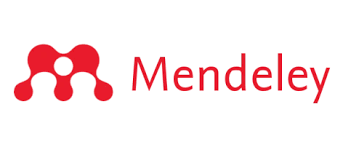The Effect of E-Warong Accessibility on Household Consumption
DOI:
https://doi.org/10.59888/ajosh.v2i6.267Keywords:
Accessibility, BPNT, Consumption, Distance, E-warongAbstract
BPNT/Sembako is a social assistance program provided by the government to improve the welfare of people experiencing poverty by providing food with balanced nutrition and providing choice and control over food. BPNT/Sembako uses e-wrong as the only distribution. Households must come to e-wrong with a KKS. Because e-wrong is the only place for distribution, e-wrong is very important, including the distance of the e-wrong from the location of the beneficiary. However, e-wrong still has a limited distribution. The purpose of this study is to generally investigate the effectiveness of the e-wrong program and specifically investigate the effect of e-wrong accessibility on household consumption, especially rice consumption, taking into account aspects of price and quality of rice, characteristics of other consumer goods, household characteristics, residential area characteristics, local government assistance, and consumption motivation. This study uses 4-month panel data (November 2019-February 2020) of BPNT/Sembako recipients in the March 2020 Susenas and the random effects (RE) approach. The results of the study show that the accessibility of e-warong has a significant effect on household consumption (rice consumption). The farther the e-warong is, the higher the consumption of rice.
References
Anggoro, D. (2023). Implementasi Kebijakan PKH, BPNT, dan E-Warong dalam Mengentas Kemiskinan di Kabupaten Mojokerto. Sosio E-Kons, 15(3). https://doi.org/10.30998/sosioekons.v15i3.18487
Arief, S., & Kusmaningtyas, A. (2021). Faktor-Faktor Yang Memengaruhi Pola Konsumsi Pangan Rumah Tangga. Civic-Culture: Jurnal Ilmu Pendidikan PKN Dan Sosial Budaya, 5(1), 449–459. https://doi.org/10.31597/ccj.v5i1.585
Hilmi, M. (2021). Pemberdayaan Masyarakat Melalui e-warong Turi KUBE (Kelompok Usaha Bersama) PKH (Program Keluarga Harapan) Untuk Kemandirian Ekonomi di Kelurahan Pesanggrahan, Kecamatan Pesanggrahan, Jakarta Selatan. Fakultas Ilmu Dakwah dan Ilmu Komunikasi Universitas Islam Negeri Syarif ….
Kurniawan, R. (2019). VARIASI PENGARUH PROGRAM BERAS MISKIN (RASKIN) TERHADAP KONSUMSI MAKANAN RUMAH TANGGA. Jurnal Ekonomi Dan Pembangunan, 27(2), 1–10. https://doi.org/10.14203/JEP.27.2.2019.1-10
Nasution, S., Sinulingga, S., & Sufika, A. (2021). Perception of Country Tourism on Tourism Quality in Lake Toba North Sumatera 2020. Budapest International Research and Critics Institute-Journal (BIRCI-Journal) Vol, 4(1), 180–188.
Pramesti, R., Muhammad, A. S., & Safitri, D. P. (2019). Impelementasi Bantuan Pangan Non Tunai Melalui Elektronik Gotong Royong Di Kota Tanjungpinang. Spirit Publik: Jurnal Administrasi Publik, 14(1), 81–93.
Salim, F. D., & Darmawaty, D. (2016). Kajian ketahanan pangan rumah tangga nelayan buruh di Desa Bajo Sangkuang Kabupaten Halmahera Selatan. Jurnal Sosial Ekonomi Kelautan Dan Perikanan, 11(1), 121–132. https://doi.org/10.15578/jsekp.v11i1.3177
Selian, D. A., & Jannah, M. (2018). Faktor-faktor yang mempengaruhi pola konsumsi rumah tangga keluarga miskin di Desa tertinggal Kabupaten Aceh Tengah. J-EBIS (Jurnal Ekonomi Dan Bisnis Islam), 37–56.
Sutanta, H., & Wulandari, M. D. (2019). Mapping the distribution network of a government non-cash food assistance in Kulon Progo Regency using geospatial information system. IOP Conference Series: Earth and Environmental Science, 389(1), 12053.
Swindells, S., Ramchandani, R., Gupta, A., Benson, C. A., Leon-Cruz, J., Mwelase, N., Jean Juste, M. A., Lama, J. R., Valencia, J., & Omoz-Oarhe, A. (2019). One month of rifapentine plus isoniazid to prevent HIV-related tuberculosis. New England Journal of Medicine, 380(11), 1001–1011.
Published
Issue
Section
License
Copyright (c) 2024 Sari Oktavia, Sartika Djamaluddin

This work is licensed under a Creative Commons Attribution-ShareAlike 4.0 International License.
Authors who publish with this journal agree to the following terms:
- Authors retain copyright and grant the journal right of first publication with the work simultaneously licensed under a Creative Commons Attribution-ShareAlike 4.0 International. that allows others to share the work with an acknowledgement of the work's authorship and initial publication in this journal.
- Authors are able to enter into separate, additional contractual arrangements for the non-exclusive distribution of the journal's published version of the work (e.g., post it to an institutional repository or publish it in a book), with an acknowledgement of its initial publication in this journal.
- Authors are permitted and encouraged to post their work online (e.g., in institutional repositories or on their website) prior to and during the submission process, as it can lead to productive exchanges, as well as earlier and greater citation of published work.










